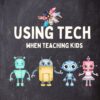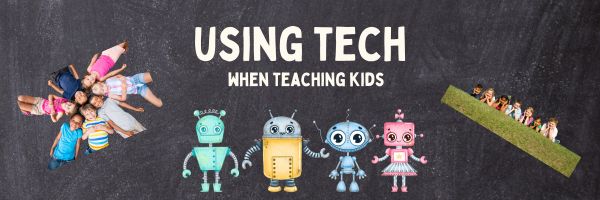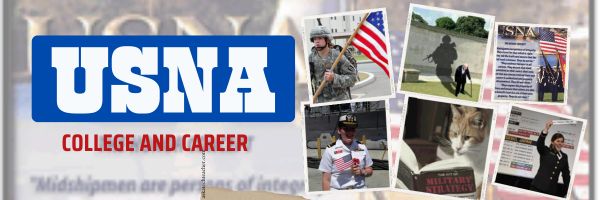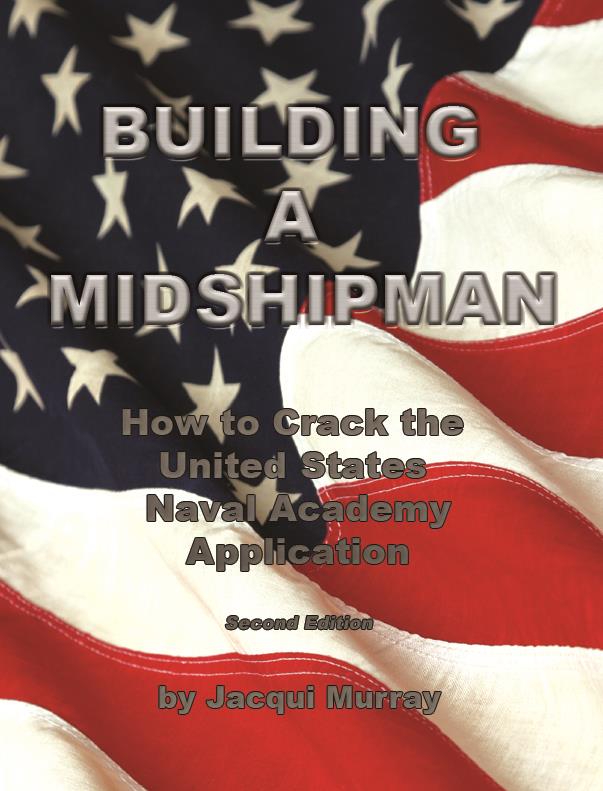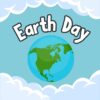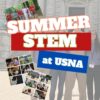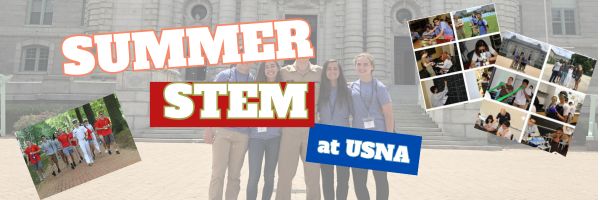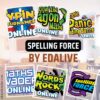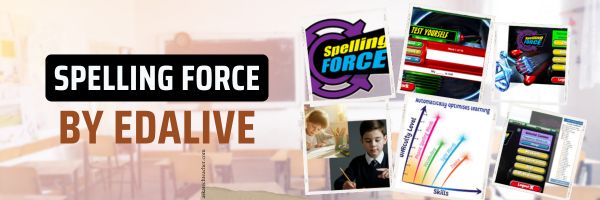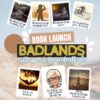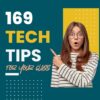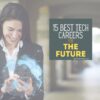Year: 2025
Navigating How and When to Use Tech When Teaching Young Children
New America has a good overview on raising kids with tech:
Navigating How and When to Use Tech When Teaching Young Children
Take-Aways from Our Two-Part Series Focused On Tablets in Pre-K Through Third Grade
Early childhood educators make thousands of decisions each day. Among them are decisions around technology use with their young learners, which are too often shaped by policies and pedagogies that lag behind the latest research and the abundance of available options.
Share this:
Applying for a Military Academy
Military academies offer benefits most high school students and their parents don’t realize:
- the quality of education is comparable to an Ivy League
- they not only provide you with an education, but provide a job when you finish–no job hunting, no rejections,
- they pay you to go to school–that’s right, each of the four years, you are paid more to attend classes and complete the other activities required to graduate
- they are free–no charge for classes, books, room and board; they even pay for your summer school
But they are picky. Applying pits you against a huge pool of highly-qualified applicants. It’s not just about who has the best GPA and SAT scores. Admissions weighs:
- scholastics
- physical
- moral
- personal drive
To gain acceptance requires something different than the usual preparation. Here’s one book to prepare you:
Building a Midshipman
by Jacqui Murray
Available: Amazon
You don’t have to be a miracle-worker to the 10% of applicants accepted to a military academy, but you do need a plan. For the thousands of students who apply every year–and slog through the numbing concatenation of decisions preceding a nomination–there is no greater discouragement than the likely event that they will fail. This, though, is the Board’s peek into an applicant’s moral fiber and an important ingredient to the go/no go decision.
In the words of James Stockdale, USNA ’46 and Medal of Honor Winner: “The test of character is not ‘hanging in there’ when you expect a light at the end of the tunnel, but performance of duty and persistence of example when you know that no light is coming.”
This is the true story of Maggie Schmidt, an All-American kid who dreamt of attending the Naval Academy when her research into the typical Midshipman uncovered a profile alarmingly like herself. This book describes her background and academic interests, her focus, as well as her struggle to put together a winning admissions package. Along the way, you gain insight into the moral fiber that grounds everything she does and the decisions she must make that some consider impossible for an adolescent, but are achievable for thousands of like-minded teens. This workbook walks you through the long process, provides check lists of everything required, decision making matrices, goal-setting exercises to determine if USNA is a good fit for you, and a mix of motivation and academic advice to balance a decision that rightfully might be the biggest one most teens have ever made.
Share this:
Earth Day Class Activities
Every year, the United Nations recognizes April 22nd as International Mother Earth Day. It is a day we can all participate in making our air clean, water fresh and land unlittered rather than accepting the trash-filled oceans, the smoggy skies, and the debris-laden land that is becoming the norm.
Despite the questionable health of our world, we have made progress. Back in 1970, when Earth Day was first celebrated, trucks spewed black smoke as they drove down the highways, toxic waste was dumped into oceans with no repercussions, and the general opinion was that the Earth took care of itself. That changed when U.S. Senator Gaylord Nelson, Earth Day’s founder, witnessed the ravages of the 1969 massive oil spill in Santa Barbara California and decided it was time to do something. He started with a “national teach-in on the environment” with a simple goal: Encourage people to recognize the importance of protecting the Earth:
“It was on that day [Earth Day] that Americans made it clear they understood and were deeply concerned over the deterioration of our environment and the mindless dissipation of our resources.”
Before I go any further, listen to Earth’s song, recorded by NASA in space. It is stunning: (more…)
Share this:
Teacher-Authors: What’s Happening on my Writer’s Blog
A lot of teacher-authors read my WordDreams blog. In this monthly column, I share the most popular post from the past month:
What Should You Know About Interactive Storytelling?
Here’s what I cover:
- What is it?
- How can writers use it?
- Advantages
- Disadvantages
What is interactive storytelling
Interactive storytelling is a growing trend that allows readers to actively participate in shaping the narrative. With advancements in augmented and virtual reality, stories are no longer confined to the pages of a book. Authors can provide immersive experiences and create narratives that respond to reader choices.
Interactive storytelling allows the audience to actively shape the story rather than passively consume it. Unlike traditional storytelling with a fixed plot, interactive stories let users influence the direction, outcomes, and details through their choices and input. It blends creativity with technology, making each telling unique. 81% of marketers agree interactive content grabs attention more effectively and 66% admit it increases audience engagement. I can attest to this popularity. As a teacher, I occasionally asked students to choose from among several story endings or create their own. A good example is Mission USA, a website that uses interactive storytelling to teach historic events such as the American Revolution, Civil Rights, the Great Depression, and more:

Students click into one of the stories and are asked to make decisions similar to those made during that time period and then experience the consequences of their choices–whether the Loyalists or Tories won, how a family survived (or didn’t) the Great Depression, or something else. Here’s a video to explain it:
[youtube https://www.youtube.com/watch?v=Kb_te-MmM04?si=v9ZG8x8n6TjCGMgk]
Another example many will remember is Oregon Trail where participants were expected to stock their Conestoga wagon to head to the Oregon territories (or California). Along the way, they made decisions such as whether to purchase mules vs. oxen, how to ford a river, how to cure diseases and injuries, and more. Their selections ultimately determined if they survived.
How can writers use interactive storytelling
Share this:
Summer STEM at USNA
Summer STEM (Science, Technology, Engineering & Mathematics), is a week-long, overnight camp at USNA each year for students currently in the 7th-10th grades. Here’s information from the USNA website:
Engineering is all about creating, building, and making things better! So what does it take to be an engineer? If you like math and science, you are off to a great start. If you enjoy discovering new things, solving problems, and learning how things work – even better! Creativity, persistence, and the desire to make the world a better place are also important qualities. Becoming an engineer requires hard work and a good education. Our summer program will be a great start to your career in science and engineering.
The schedule:
Monday: Travel and Check-in
Tuesday: Air and Space Museum/DC Tour
Wednesday – Friday: Stem modules and presentations (Students will visit all science and technology majors at the US Naval Academy)
Saturday: Open House and Demonstrations—Share your new skills with your parents and friends. End the week by putting your projects on display.
Share this:
Great App to Teach Spelling
Too often, students think spelling is solved by the red squiggly lines that alerts writers to misspellings, but those can be wrong. The only real solution is students learn to spell organically, starting early in their education career and continuing throughout. Here’s one good tool to make that happen:
Spelling Force by EdAlive:
A Smart Solution for Mastering Spelling
Spelling Force, developed by Australian edtech company EdAlive, is a powerful and engaging platform designed to boost spelling proficiency in children through interactive learning, intelligent adaptation, and curriculum alignment. With a proven track record in classrooms across Australia and beyond, Spelling Force is a valued resource for teachers, students, and parents alike.
What is Spelling Force?
Spelling Force is an online spelling program designed for students from Year 1 to Year 10, although it is most commonly used in primary and lower secondary classrooms. It combines dynamic learning activities with a powerful adaptive learning engine that tailors content to each student’s individual needs. Students work through interactive spelling exercises, games, and quizzes that are designed not just for repetition, but for true understanding and mastery.
Unlike many spelling tools that simply drill lists of words, Spelling Force offers a much richer and more strategic approach. It identifies each student’s weaknesses and presents targeted exercises to improve their skills, building confidence and competence along the way. (more…)
Share this:
Easter Classroom Resources
Many Christians celebrate Jesus Christ’s resurrection on Easter Sunday. To non-Christians (or non-traditional Christians), that event signifies a rebirth of spring that is filled with joy and gifts — and chocolate! Overall, it is America’s most-popular holiday with Christmas a close second. Here’s a good mixture of games, lesson plans, stories, and songs that can be blended into many academic subjects (for updates on Easter-themed websites, click here):
18+ Interactive Easter websites
Preschool-2
This website includes a colorful collection of Easter (and Spring) games and information that is visual and enticing to youngers. Games are Easter Math, Easter Egg Hunt, Easter Egg Dress-up, Easter Word hunt, complete-the-sentence, and more. Also, viewers will find websites about the history of Easter around the world.
ABCYa Easter Egg Hunt
Preschool-Kindergarten
Like all of ABCYa’s games and activities, Easter Egg Hunt is a colorful and intuitive educational game for young children. It is easy-to-understand, playful, with favorite Easter symbols and energetic music that will engage children. The five Easter-themed games are easy-to-understand (no directions required) with a countdown clock to motivate activity. Nicely, it also aligns gameplay with the national standards met.
Share this:
Teacher-Authors–Join me to launch my Indie Book
Starting tomorrow, on my writer’s blog, WordDreams, my wonderful efriends are helping me launch my latest prehistoric fiction, Badlands. Early reviews…
“Your best ever”–husby (you say he said the same thing last time? I don’t remember)
“…prehistoric man takes on nature in all her fury and survives.” –Sandra Cox

I’ll be visiting writer friend blogs April 15-26th. We’ll chat about Badlands and writing in general. Here are articles you can read in alphabetic order. The first are about the Neanderthal world and the last few writerly topics:
- Neanderthal Doors
- Neanderthal Healing Tips
- Neanderthal nomadic life
- How to research prehistory
- What I Learned from my Neanderthal Characters
- 8 Bits of Life Wisdom From My Computer
- 10 Things You Probably Don’t Know About Me Park II
Here’s the schedule of who I’ll visit when:
April 15: Sally Cronin–Spotlight
April 16: Life of a Neanderthal Nomad–Liesbet Collaert
April 17: 8 Bits of Life Wisdom From My Computer–Chris?
April 18: 10 Things You Probably Don’t Know About Me Part II–Sandra Cox
April 19: What I Learned from my Neanderthal Characters?–Liz Gauffreau
April 21: Prehistoric research–Alex Cavanaugh
April 22: Miriam Hurdle–Spotlight
April 23: Anneli Purchase–Spotlight ???? Confirm that
April 24: Healing Tips from Neanderthals–Colleen Chesebro
April 25: Neanderthal doors–Dan Antion
April 26: Lynette d-Arty-Cross–Spotlight?
Each day, I’ll post a short introduction to the host. It’ll include a link to their blog.
Badlands by Jacqui Murray,
Book 2 in the Savage Land trilogy
Book 8 in the Man vs. Nature series
Editor: The extraordinary Anneli Purchase
Amazon Universal link http://a-fwd.com/asin=B0DFCV5YFT
To celebrate the launch of Badlands, Book 1 in the trilogy, Endangered Species, will be
FREE on Amazon Kindle April 15-20, 2025
If you miss the freebie, all of my prehistoric fiction is on KU which makes it free to KU readers all the time.
“The content presented in this blog are the result of creative imagination and not intended for use, reproduction, or incorporation into any artificial intelligence training or machine learning systems without prior written consent from the author.”
Jacqui Murray is the author of the popular Man vs. Nature saga, the Rowe-Delamagente thrillers, and the acclaimed Building a Midshipman, the story of her daughter’s journey from high school to United States Naval Academy. She is also the author/editor of over a hundred books on integrating tech into education, adjunct professor of technology in education, an Amazon Vine Voice, and a freelance journalist on tech ed topics. Look for her next prehistoric fiction, Balance of Nature, Winter 2026
Share this:
Tech Tip #125: Basics in Every Lesson Plan
In these 169 tech-centric situations, you get an overview of pedagogy—the tech topics most important to your teaching—as well as practical strategies to address most classroom tech situations, how to scaffold these to learning, and where they provide the subtext to daily tech-infused education.
Today’s tip: Basics in Every Lesson Plan
Here are four skills to be included and reinforced in every lesson plan. Don’t teach them! Blend them into your core lessons, as part of the workflow. Include them as you do when you teach reading (in non-reading classes), using a pencil, and handwriting:
- Keyboarding
- Digital citizenship
- Vocabulary
- Problem solving
For the other two, watch this video:
–summarized by NoteGPT
Summary
In this informative video, Jacqui Murray discusses effective technology integration in K-8 classrooms, highlighting the current supportive landscape for using technology in education. Murray emphasizes that this is an ideal time to be involved in teaching technology, whether or not one considers themselves a tech expert. The discussion begins with an introduction to Murray’s extensive experience in education, focusing on technology’s role in lesson delivery and integration into the curriculum. She introduces six key topics or “strands” that are essential for creating engaging lessons that reflect modern educational standards, blending subjects together rather than treating them in isolation.
The six strands include digital citizenship, keyboarding skills, problem-solving, research skills, vocabulary expansion, and publishing and sharing. For each topic, Murray offers practical strategies for teaching and integrating them into existing lesson plans. She talks about how to establish a foundation of digital citizenship by making students aware of online safety and etiquette from early grades. Murray discusses the necessity of keyboarding skills in today’s tech-driven world and how to incorporate them seamlessly into instruction.
Murray further explores the importance of problem-solving skills, encouraging students to troubleshoot and find solutions independently. She emphasizes safe and effective research tactics, urging students to critically evaluate sources. Expanding vocabulary through digital tools is highlighted, as is the critical element of sharing and publishing student work for collective learning and empowerment. Ultimately, Murray encourages teachers to view these strands as a cohesive framework that enhances learning and prepares students for future academic challenges.
Highlights
- 🎓 The importance of blending subjects to create cohesive lessons that reflect modern educational standards.
- 💻 Digital citizenship is essential from an early age, requiring ongoing discussions about online safety and etiquette.
- ⌨️ Keyboarding skills should be integrated into lessons, enhancing students’ competency with technology.
- 🛠️ Problem-solving skills transform students into independent learners who can troubleshoot tech issues.
- 🔍 Research skills empower students to critically evaluate sources, making them more informed consumers of information.
- 📚 Vocabulary expansion is essential in education, encouraging students to actively engage with words and definitions.
- 🔗 Publishing and sharing student work creates a sense of community and enhances collaborative learning.
Key Insights
- 🌐 Digital Citizenship is Essential: Murray highlights that it’s crucial to integrate discussions about digital citizenship into lessons at every grade level. This approach trains students to navigate the online world safely and responsibly, emphasizing that education about digital behavior is continuous and should evolve as students progress in their understanding of technology.
- 💡 The Role of Keyboarding Skills: Teaching keyboarding isn’t merely an added layer; it’s essential for enhancing classroom efficiency. By embedding keyboarding education into daily lessons, teachers equip students with necessary tools for success across subjects. This practice fosters dexterity that will serve students well in their digital interactions, allowing them to focus more on the content rather than the act of typing.
- 🔄 Encouraging Problem-Solving: Murray’s emphasis on fostering problem-solving abilities reflects a shift toward student autonomy in learning. By guiding students to find solutions independently, teachers streamline classroom management and empower students to take control of their learning experiences, ultimately making the educational process more dynamic.
- 🔍 Effective Research Skills: Educators must emphasize the importance of teaching students how to ascertain reliable information online. By preparing them to discern reputable sources from biased or misleading content, students become not only consumers of knowledge but also critical thinkers capable of navigating the complexities of information on the internet.
- 📖 Vocabulary Matters: The intentional teaching of vocabulary through multiple mediums can enhance comprehension and engagement. Murray suggests that using technology to aid vocabulary acquisition allows students to seek definitions and gain deeper understanding dynamically, rather than superficially glossing over complex content.
- 🌐 Collaborative Learning Through Sharing: Emphasizing the importance of publishing and sharing work transforms how students interact with their learning. In fostering an environment where students contribute to a collective body of knowledge not only democratizes learning but also leverages peer feedback for continuous growth, helping students to learn from one another.
- 🤝 Integration Across Subjects: Murray’s call for the integration of the six strands across disciplines underlines education’s interconnectedness. Teachers should consider these elements as intertwined rather than isolated, optimizing educational outcomes by enhancing student engagement and contextual understanding across subjects.
To finish up, read this article:
“What is the 21st Century lesson plan”
Sign up for a new tip each week or buy the entire 169 Real-world Ways to Put Tech into Your Classroom.
What’s your favorite tech tip in your classroom? Share it in the comments below.
Share this:
15 Best Technology Careers for the Future in 2025
From We Are Teachers, a run-down on the top tech careers for 2025:
15 Best Technology Careers for the Future in 2025
Computer and information technology might be one of the most exciting fields for teens to consider as they think about their future careers. These jobs are often very well paid (the average salary in this field is more than double compared to other occupations). The growth outlook for technology careers is terrific too, at around 11% over the next 10 years (the average for all jobs is about 4%). Here are some of the top tech jobs for high schoolers to consider as they plan for the future.

